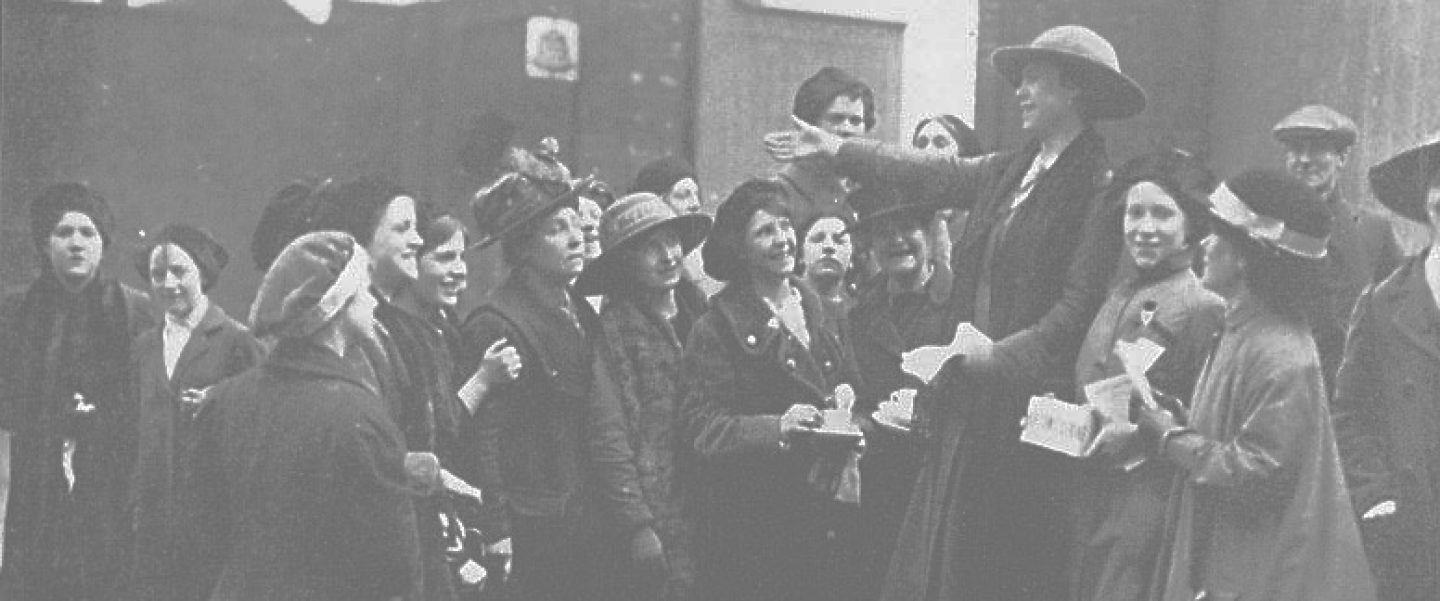Gender neutral toilets don’t work for women

The anonymous author of this blog is an expert on public toilet provision and has been part of a range of committee work on setting government standards on toilet provision with particular emphasis on increasing the levels of provision for women
Women have less than half the level of provision of toilets as men owing to historical sexist legal requirements that favoured men and because, even if the floor-space area for the Ladies and Gents is identical, men will always have more places to pee because you can fit far more urinals in than cubicles.
Therefore, women always queue for the loo, because of unequal provision. Women also take longer to use the toilet for biological reasons.
Women have more reasons to use the toilet than men, including menstruation, menopause, pregnancy, incontinence, and caring for babies, small children and elderly relatives.
Yet no government has accepted that this is a gross infringement of human rights and equalities legislation; more likely women are blamed for ‘taking too long’ or their plight is seen as a joke.
Women’s toilets currently don’t meet the needs of women who have campaigned and waited for change for ages. Now their needs are to be further ignored.
Women comprise around 52% of the population. In contrast, the recent heightened activism on transgender questions has led to immediate change to accommodate a very small section of the population of less than 1%. ‘Ladies’ and ‘Gents’ toilets are being desegregated all over the country as a result of intense lobbying. But this means potentially any men can now use the ‘Ladies’. Indeed there is no ‘Ladies’ anymore.
 Relabelling existing ‘Ladies’ and ‘Gents’ as Gender Neutral Toilets (GNTs) impacts upon women the most as they cannot use the urinals, which are often the only ‘toilets’ available in the ‘Gents’. Desegregation reduces the chances of women being able to use a cubicle if men can use them too. (Note we have seen several examples of sexist signage where the Ladies are opened to ‘everyone’ but the ‘Gents’ is kept only for men, as in the photo.)
Relabelling existing ‘Ladies’ and ‘Gents’ as Gender Neutral Toilets (GNTs) impacts upon women the most as they cannot use the urinals, which are often the only ‘toilets’ available in the ‘Gents’. Desegregation reduces the chances of women being able to use a cubicle if men can use them too. (Note we have seen several examples of sexist signage where the Ladies are opened to ‘everyone’ but the ‘Gents’ is kept only for men, as in the photo.)
Whilst the percentage of trans people is very small, current consultation on changes to the 2004 Gender Recognition Act, will potentially enable any man (or woman) to choose which toilet they use without any restriction. Already many local authorities and other toilet providers are jumping the gun and desegregating their toilets, to show they are supportive of ‘diversity’.
The Mayors of the Greater London Authority (GLA), and of Manchester are committed to desegregating public toilets in these cities. This affects both residents and overseas tourists. For example, some Islamic, Hindu, and Orthodox Jewish women are forbidden to share public toilet buildings with male strangers, especially when menstruating.
Thus under the pretext of inclusion, all these changes are removing from women the right to privacy, dignity and safety by allowing any man to enter women-only spaces such as toilets, showers, sports clubs, and women’s rape refuges: thus erasing women and their rights.
Likewise, relabelling the disabled toilet as ‘inclusive toilets’ creates more problems for people with disabilities. They have to wait even longer to use the accessible toilet if other groups now feel they are entitled to use their facilities too. People with disabilities of various sorts comprise 20% of the population but they are lucky to find even one ‘disabled toilet’ (accessible toilet).
 There is little thought given to the design implications of the different needs of women and men in relation to urination and defecation, let alone the worries many women have about dealing with menstruation in mixed toilets. An increasing number of women are using Moon cups as an environmental form of sanitary protection, but these have to be washed out: something that would be difficult in mixed toilets with shared washing facilities.
There is little thought given to the design implications of the different needs of women and men in relation to urination and defecation, let alone the worries many women have about dealing with menstruation in mixed toilets. An increasing number of women are using Moon cups as an environmental form of sanitary protection, but these have to be washed out: something that would be difficult in mixed toilets with shared washing facilities.
Women are concerned about the location of many toilets, down corridors, in underpasses, and in unlit areas. Enabling potentially hostile men to enter the Ladies creates all sorts of personal safety issues. It is foolish to say ‘people already use mixed toilets at home’ as such toilets are not open to strangers.
Women and girls want separate cubicles because of issues of noise, smell, privacy and fear of potential attack. Women also want to feel safe in the washing and waiting areas outside the toilet cubicles especially when they are often coping with young children at the same time.
Legally, the decision to desegregate toilets is in contravention of the official government guidance, given within the British Standards and the related Building Regulations as to the levels of male/female toilet provision required. British Standard, BS 6465 Part 1 on Sanitary Installations sets out the levels of provision, including tables on required male/female facilities (BSI, 2006).
The ‘linked’ Building Regulation Part G on water and sanitation provides the legal basis for the application of these British Standards (DCLG, 2016).
Particular concern is expressed about the increasing trend for boys and girls having to use the same gender-neutral toilets at school, especially for young teenage girls who have just started menstruating and want some privacy. It is actually illegal not to provide separate toilets for boys and girls in schools! BS6465 Part 1, page 19, Table 6 sets ‘Minimum Sanitary Provision for Schools’. This is not just optional guidance but has the force of law because the requirements are enshrined in the 2012 School Premises Regulations which requires separate facilities for boys and girls over the age of 8.
Contrary to what activists may say on their webpages and blogs, these regulations are not obsolete and are still in force, and can only be repealed by act of parliament.
Under-provision of toilets for all women and girls is also illegal under the requirements of the Public Sector Equality Duty (PSED) under the 2010 Equality Act. The PSED was meant to require local authorities and other public providers to achieve equality in the provision of goods and services, including toilet provision. But such requirements have been widely flouted in respect of toilet provision for women, and have sunk without a trace.
Mixed toilets are also against the principles of United Nations guidance. Sex segregation is presented as a priority in achieving equality for women, especially in developing countries:
- Paragraph 2.1.2 of the UNICEF document on applying the UN Sustainable Development Goals (especially SDG 6) to sanitation specifies that separate school toilets should always be provided for girls (UNICEF, 2016).
- The United Nations Report on The Human Right to Safe Drinking Water and Sanitation states that gender-specific toilets should be provided, especially in schools, where privacy to deal with menstruation is a major factor in determining whether girls continue their education (Albuquerque and Roaf, 2012, pp 35, 153-4).
- Around a quarter of all girls and women of child-bearing age will be menstruating at any one time, and in some African countries school girls are likely to be absent for up to 5 days every month or just drop out.
As a UN member and signatory to the UN SDGs Directives on sustainability, sanitation, gender and equality, the UK (and other developed countries) cannot see themselves as ‘above’ these requirements. The requirement for separate toilets for women applies to all countries, and thus arguably takes precedence over UK toilet desegregation policies.
When I raised this with the government, I was told there was no compulsory requirement for the UK to apply these UN directives!? This is very odd, as the government has integrated into UK law most of the other SDG requirements especially regarding environmental sustainability. The official definition of sustainability has three components: environmental, economic and social including gender equality but the latter is often flouted and ignored.
I argue strongly against desegregating public toilets, but I concede that the provision of a few additional separate, self-contained cubicles (located outside the Ladies or the Gents) would give those who feel more comfortable using gender neutral toilets an alternative without taking away scarce toilet facilities from existing female users. But these must be in addition to separate accessible toilets for the disabled (BSI, 2009).
If the government was really concerned with equality it would start by increasing the level of toilet provision for women who comprise the majority of the population, but there is no political will to do so.
References
Albuquerque, Catarina de with Roaf, Virginia (2012) On the Right Track: Good Practices in Realising the Rights to Water and Sanitation, London: United Nations, Human Rights to Water and Sanitation Declaration, UN Special Rapporteur Report, page 35.
BSI (2006) BS 6465-1: Sanitary installations. Code of practice for the design of sanitary facilities and scales of provision of sanitary and associated appliances, London: British Standards Institute.
BSI (2009) BS 8300:2009+A1:2010, Design of buildings and their approaches to meet the needs of disabled people. Code of practice, London: BSI
DCLG (2016) Sanitation, hot water safety and water efficiency, Approved Document G of the Building Regulations, London: DCLG
Greed, C. (2003) Inclusive Urban Design: Public Toilets, Oxford: Architectural Press.
UNICEF (2016) Core Questions and Indicators for Monitoring WASH in Schools in the Sustainable Development Goals, New York: UNICEF with WHO.
We believe that it is important to share a range of viewpoints on women’s rights and advancement from different perspectives. WPUK does not necessarily agree or endorse all the views that we share.

You must be logged in to post a comment.